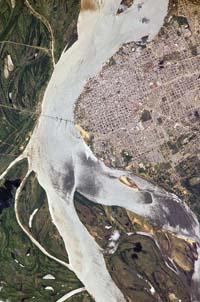Dependent on solar activity

The water level of the Paraná River, the second largest in South America, depends on solar activity, according to a group of the University of Buenos Aires and the National Institute of Agricultural Technology. The record of the flow of the Paraná River dates back to 1904 and they have been able to verify that the variation of the flow is associated with sunspots that multiply and decrease cyclically in the Sun.
When the number of sunspots increases (increases and decreases in a cycle of about eleven years), solar radiation also increases. This group of researchers explained that during these radiation floods the temperature increases in the tropical zones, with the consequent increase of rain and the increase of the flow of the Paraná.





